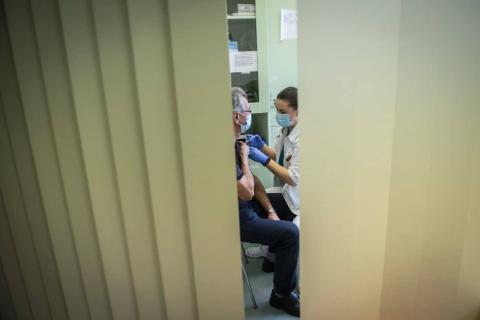First Vaccines Fail to Halt Pandemic in Southeast, Central Europe

It has been almost a year since the first cases of coronavirus were confirmed in Southeast and Central Europe, and with the start of vaccination, which began in some countries in December, the region is awaiting a return to normal life.
However, that return to normality is not yet in sight as the number of new confirmed cases of infection continues to escalate.
Although Serbia is a regional vaccination champion, with more than a million of its population of 6.9 million already vaccinated, the number of new infections is still high.
A total of 2,518 of the 10,266 people tested for the novel coronavirus in Serbia in the past 24 hours tested positive, officials reported.
The big cities have reported a spike in infections in the last few days. The reason for that, some officials say, is that many people were hit by a wave of premature optimism that led to numerous public gatherings, including massive illegal parties as well as winter holidays in the mountains, which have been well visited lately.
The so-called "third wave" of the pandemic has hit Serbia's northern neighbour Hungary hard, with case numbers on the rise again, reaching 3,000 daily and a daily death toll of around a hundred.
"We are in a very dangerous time," Prime Minister Viktor Orban admitted in his latest radio speech on Friday last week, adding that, "we can only win lives with vaccination".
Hungary is the only country in the EU to have licensed both the Russian Sputnik V and Chinese Sinopharm vaccines besides the jabs ordered centrally by the EU.
But inoculation is going quite slowly. So far, 453,457 people of a total population of about 9.7 million have been vaccinated, 201,005 of whom have received the...
- Log in to post comments










